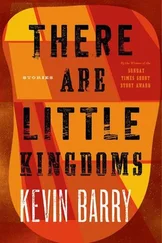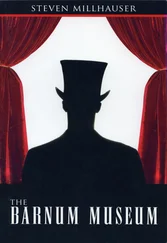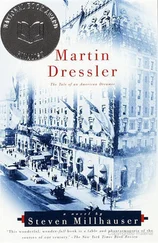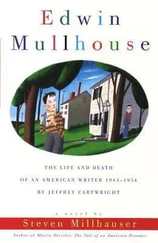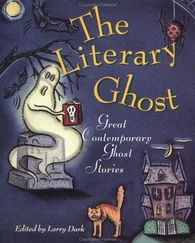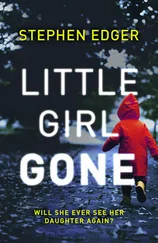[4]
LANDSCAPE WITH FOG. STONE HILL,
EARLY MORNING
1836
Oil on canvas, 26 × 32 in.
In the early spring of 1836, at the urging of fellow painter Edward Ingham Vail, Moorash left Boston, where he had been struggling for two years, for the village of Strawson in northern New York. Here he rented a cottage “dirt cheap” on the outskirts of town. The country appeared to agree with him, and in June he moved to the nearby village of Saccanaw Falls, where he rented a rural cottage about half a mile from the village center on sixteen acres of fields, woods, and streams. He was soon joined by his sister Elizabeth, who had been living restlessly with her parents in Hartford, Connecticut. She had recently been left a small annuity upon the death of a favorite aunt, and saw in the move a chance both to free herself from unhappy domestic circumstances and to watch over her beloved and careless brother. The property contained a decaying barn that Moorash used as a studio.
His new life delighted him, in part because he was happy to put distance between himself and Vail, whose dreamy landscapes and sentimental portraits grated on his nerves. The cottage was situated on a small rise known as Stone Hill, a name that in Elizabeth’s Journal refers sometimes to the hill itself, sometimes to the entire property, and sometimes to the cottage. Moorash’s life at Stone Hill was by no means as isolated as has been claimed (see Havemeyer, 56–58, for the classic statement of Moorash’s “romantic solitude”); Elizabeth records frequent visitors, such as William Pinney and his sister Sophia, Edward Ingham Vail, the miniaturist Thomas Swanwick, the itinerant folk artist Obadiah Shaw, who specialized in perspective views painted on cigar-box lids and Biblical scenes painted on glass, and the poet and portraitist Lyman Phelps (later a successful attorney-at-law). In addition, the Journal mentions numerous excursions to Strawson and the surrounding countryside, as well as twice-weekly walks into Saccanaw Falls, a small but bustling village of two churches, four taverns, a dry goods store, two bakeries, three butcher shops, a cooper’s shop, three smithies, a tannery, a mason’s shop, a furrier’s, a brewery, a hatter’s, two druggist shops, and even a musical instrument establishment.
The painting, completed in late summer, should be seen as an attack on the popular topographical views of the day, on the early contemplative landscapes of the Hudson River painters, and perhaps on the entire genre of landscape painting, which by mid-century would supplant portraiture in popular esteem. Indeed there is a distinct element of satire here, despite the absolute seriousness of the work. As one early critic put it: where is the landscape? Moorash has chosen to depict a thick, obliterating fog, in shades of gray, white, and black, with brown and green tints seeping through and, in the right-hand portion, a luminous yellow-ocherish burst where an invisible sun is glowing. Nothing whatever is visible in the picture, aside from the brilliantly rendered fog itself and a single, sharply emergent leafless branch in the lower left-hand corner; here and there dark, wavering forms appear indistinctly. Moorash has completely abolished perspective. There is no vantage point, no center; there is no image, except for the disturbing branch in the lower left hand corner, which serves the ambiguous function of anchoring the viewer in place, of providing stability, and also of radically confusing or destabilizing the point of view, for it is impossible to determine the relation of the branch to anything else. We tend to read it as a sign of height, but its position in the lower left-hand corner either contradicts that reading or forces us to imagine that we are looking down on the sceneless scene from an elevated point. The painting makes no attempt to induce in the viewer a state of revery, or to suggest deep religious meanings infused in a natural setting; rather, its effect is to disturb, to confound, to render uncertain.
[5]
ELIZABETH IN DREAM
1836
Oil on canvas, 26 1/2 × 36 in.
Moorash’s early masterpiece was refused by the National Academy of Design in New York and the Boston Athenaeum but accepted for exhibition by the Pennsylvania Academy of Fine Arts in Philadelphia, where it attracted the attention of several critics who subjected it to ridicule mixed with moral indignation. The picture was begun in the spring, set aside for Landscape with Fog , and taken up again by the end of August, after which Moorash worked at it steadily until its completion in mid-November. As the weather grew colder he was forced to move from the barn to the house, where with Elizabeth’s help he converted the upstairs parlor to a studio and moved most of the parlor furniture down to the kitchen. The ground floor of the cottage was divided into two rooms — the large kitchen and Elizabeth’s bedroom — as well as a small room in back that served as a wash-house; the upper floor consisted of a large front room (Moorash’s studio, formerly the parlor) and two back rooms, one of which was Moorash’s bedroom and one of which served as a storage or guest room. William Pinney, a frequent visitor in 1836, has left a vivid description (in a letter to his sister of 8 September 1836) of the transformed cottage, where guests were entertained in a kitchen containing an armchair, a writing desk, and a sagging sofa, as well as a pile of canvases leaning against an old churn in one corner.
Elizabeth Moorash (1814–1846) was twenty-two at the time of the painting. We are fortunate to have a likeness of her dating from 1836: a miniature watercolor on ivory painted by Edward Ingham Vail. The glossy brown-black hair parted in the middle and bursting into side curls, and the dramatic blackness of the dress, which blends into the dark background, serve to throw into relief her striking face, which Vail rendered meticulously in delicate clear color: the large, heavy-lidded eyes look out with an expression of frankness and passionate intelligence, softened by a kind of dreamy, inward stare, as if her deepest attention lay elsewhere.
Elizabeth in Dream carries to fulfillment the technique first seen in Rat Krespel , in which a central image or character infects the entire world of the painting. Here the barely perceptible face, transparent and dissolving, of the dreaming Elizabeth is dispersed throughout the picture: her transparent hair streams into the night sky, her eyes are streaks of purple-black, her bare arms melt into the brilliance of the moon; and the night itself, under the influence of the dream-dispersed young woman, seems to melt into streams of bright darkness or dark brightness. The world and the dreamer intermingle and dissolve. And yet there is nothing soft, gentle, or revery-like about this dream world, which on the contrary is charged with an extraordinary energy, as if the night were composed of black fire.
[6]
THE INFERNAL PICTURE GALLERY
1837
Oil on canvas, 34 1/8 × 46 3/4 in.
Elizabeth’s Journal for 15 December 1836 records a visit by John Pope Coddington, a New York art collector and amateur painter, whom she describes as “most bewildered by our kitchen-parlor.” Coddington appears to have been even more bewildered by the canvases he was shown, but three days later he wrote to commission a cycle of eight paintings on “The Power of Art.” Moorash labored over his unlikely commission for nearly a year before abandoning it after a third painting. He liked to refer to the cycle as his “punishment,” which it quickly became despite the attraction of the theme and the lure of income; certainly the first two paintings are disappointing performances and represent a step backward in the development of his art.
Читать дальше



